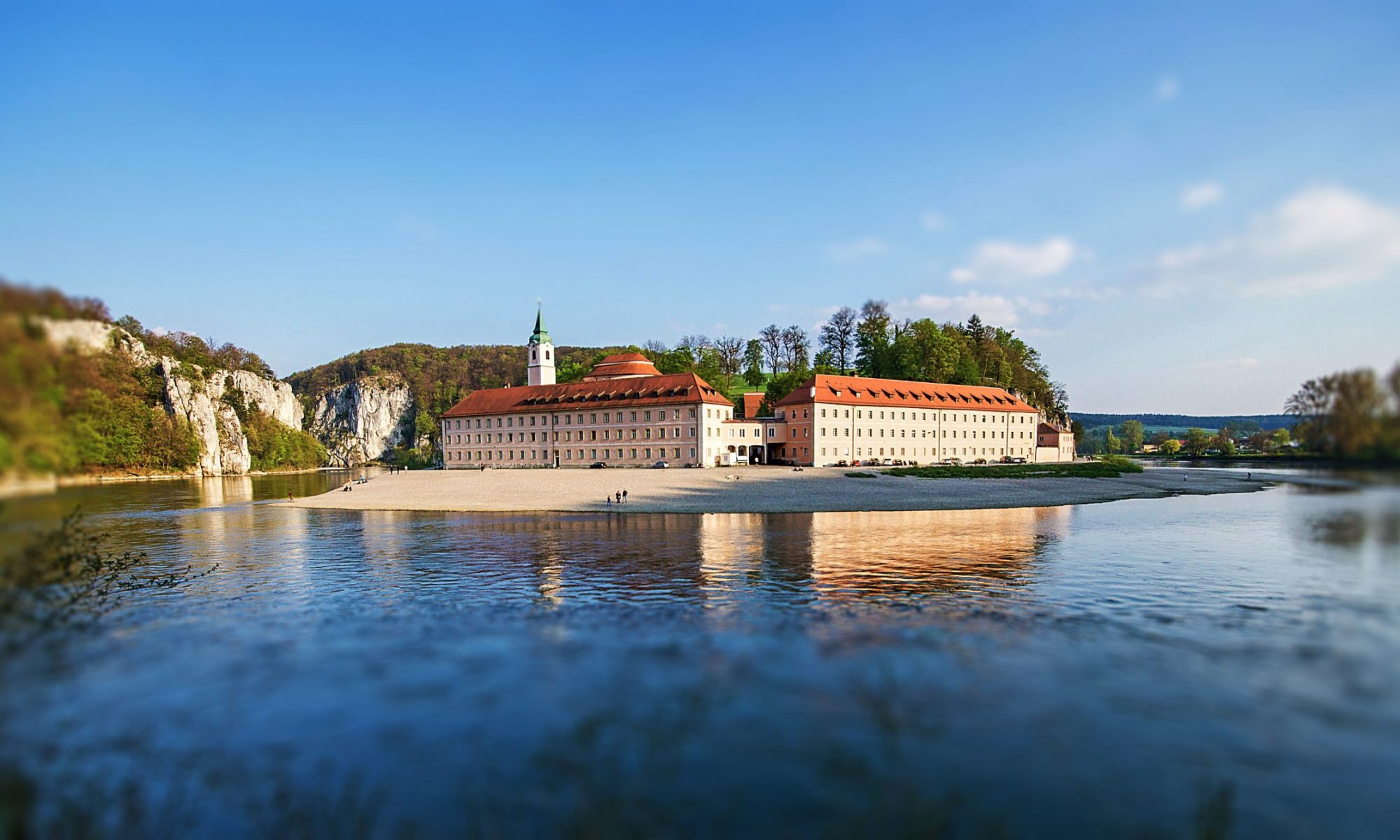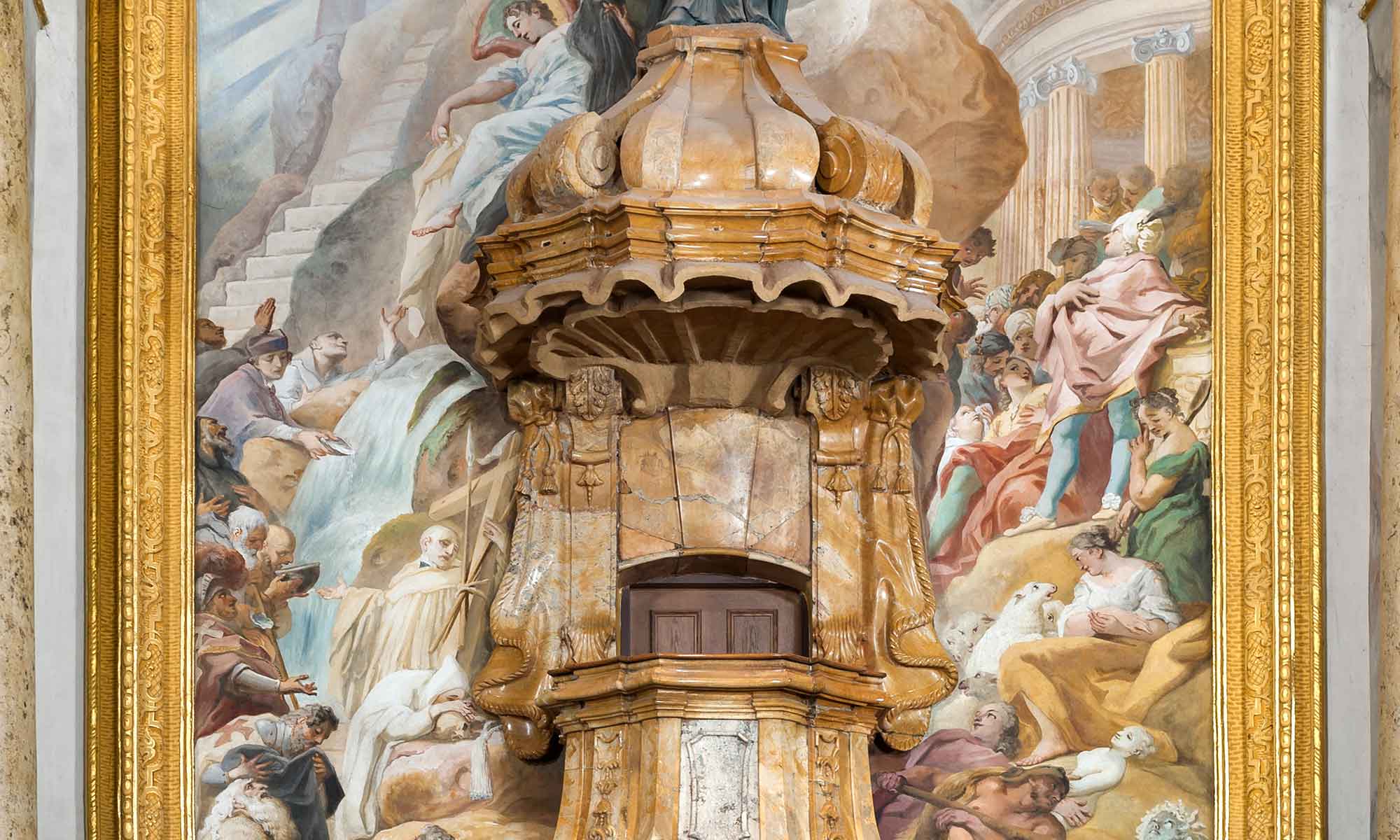Also created by C. D. Asam, albeit somewhat later (c. 1735), further wall paintings adorn the two central side bays: On thenorth side, the paintings bracket the marble pulpit made by J. J. Kürschner in 1732, forming a coherent thematic composition: The pulpit’s sounding board is crowned by an imposing stucco statue of the order’s founder, St. Benedict, admonishing the listeners to be attentive to his words. On the left side of the pulpit, those who heed his words (or those of the preacher in the pulpit) follow the path of virtue to Heavenly Jerusalem, fortified by the grace of the Gospel which has been unlocked for them by the sermon. The successful conversion of those who had at first despised the word of God by St. Benedict and his order is depicted to the right of the pulpit.
The painting in the southern bay, which suffered early in its history from rising damp, documents the global mission of the Benedictines for the Kingdom of God and the salvation of humankind. The historical example which it depicts is Columbus’ second arrival in America in 1493 with twelve Benedictine monks on board of the “Santa Maria”. That this stalwart vessel, which mastered all perils and hardships, is also meant to symbolize the Church is apparent from the sculpted rocks on either side of Kürschner’s marble
confessional.


